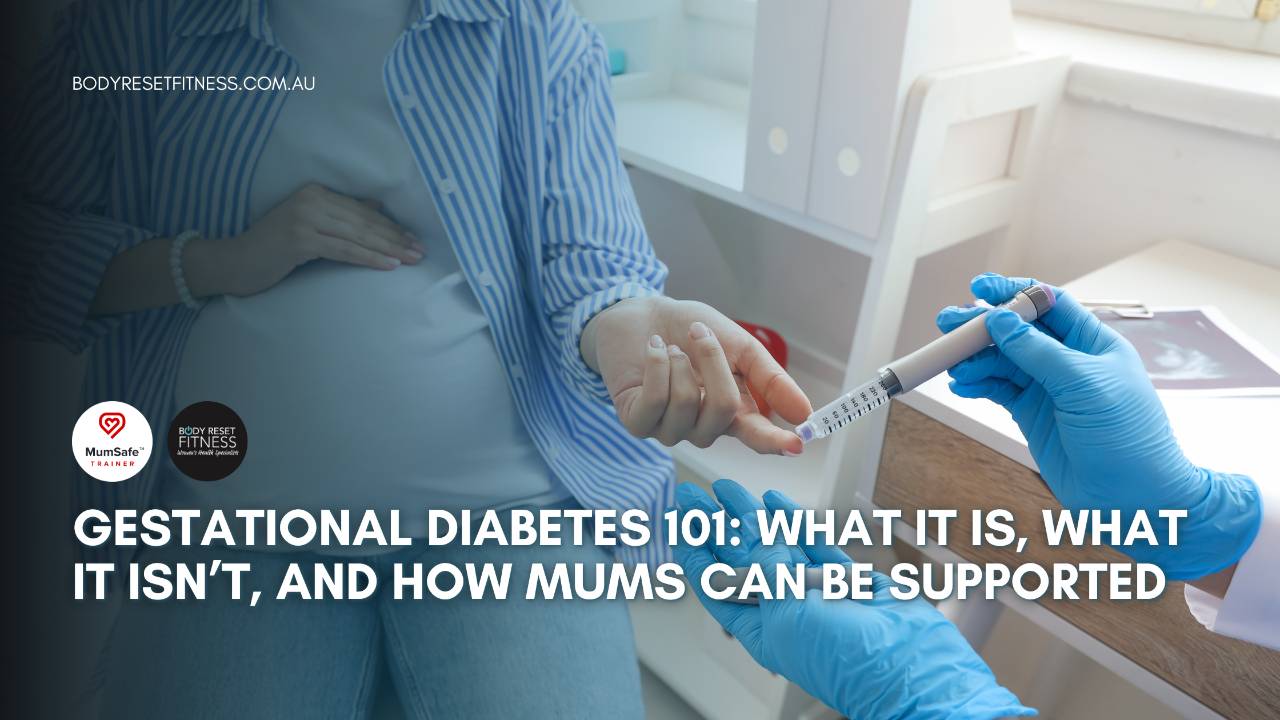Gestational Diabetes 101: What It Is, What It Isn’t, and How Mums Can Be Supported
Oct 29, 2025
Finding out you have gestational diabetes (GDM) can feel worrying at first — but it’s important to know that it’s both common and manageable. For many mums, this diagnosis comes as a surprise, especially if they’ve been eating well and staying active throughout pregnancy.
The truth is, GDM isn’t about doing something “wrong.” It’s about how the body naturally responds to pregnancy hormones. And with the right support from your healthcare team — including physiotherapists, trainers, and dietitians — most women go on to have healthy pregnancies and births.
Let’s unpack what gestational diabetes really means, why it happens, and how movement can make a difference.
What Is Gestational Diabetes (GDM)?
Gestational diabetes is raised blood glucose first identified during pregnancy, caused by increased insulin resistance driven by placental hormones.
During pregnancy, the placenta releases hormones that make your body’s cells less responsive to insulin — the hormone that helps move glucose from your blood into your cells for energy. As a result, blood sugar levels can rise, especially later in pregnancy.
What GDM Isn’t
It’s easy to misunderstand what gestational diabetes means. So, let’s clear that up:
-
It’s not a sign that you’ve done something wrong.
-
It’s not type 1 or type 2 diabetes.
-
It’s a pregnancy-specific change in how your body uses insulin.
These hormonal changes are a natural part of supporting your baby’s growth — your body is just working a little harder to keep blood sugar levels balanced.
Why It Happens — and Why 24–28 Weeks Matters
As pregnancy progresses, placental hormones increase, making your cells more insulin resistant. This typically peaks around 24 to 28 weeks, which is why that’s the window when most women are screened using an Oral Glucose Tolerance Test (OGTT).
The OGTT involves:
-
A fasting blood test
-
Drinking a glucose solution
-
Additional blood tests at 1 and 2 hours afterward
This helps your care team see how efficiently your body processes glucose.
What a Diagnosis Means for Mums
A GDM diagnosis doesn’t mean your pregnancy suddenly becomes high-risk — it just means you’ll benefit from more monitoring and support.
Most mums manage it well through small but consistent lifestyle changes, including:
-
Balanced meals that combine protein, fibre, and healthy fats
-
Gentle movement after meals to help stabilise blood sugar levels
-
Regular check-ins with your healthcare team
How Exercise and Training Can Help
Movement plays a key role in supporting blood glucose control. The focus isn’t on intensity — it’s about consistency and safety.
What tends to work best:
-
Short, steady sessions like 10–15 minute post-meal walks
-
Gentle strength and mobility exercises
-
Avoiding long sedentary periods
With guidance from a women’s health physiotherapist or pre/postnatal trainer, you can build a program that keeps both you and your baby healthy.
The Bottom Line
Gestational diabetes is manageable. With the right balance of nutrition, movement, monitoring, and medical care (if needed), most mums have healthy pregnancies and smooth births.
If you’ve recently been diagnosed, take a deep breath. You’re not alone — and with the right support team, your body is fully capable of navigating this chapter with confidence.